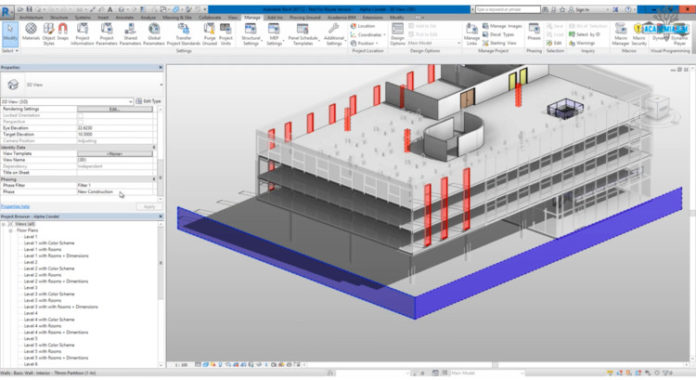When you start to consider implementing the BIM (Building Information Modeling) methodology, whether as an independent professional or as a construction firm, it’s necessary to take into account three key aspects: the technology, the process, and the people who bring it all together. In this article, we will address the key points in every one of these three aspects in order to give you insight into how to best start using BIM.
Technology
What modelling tools should I use?
When implementing BIM, it’s necessary to keep in mind the hardware and software requirements as you transition from CAD to BIM. As the use of BIM grows, so does the range of services that we are able to offer as architects.
Currently, two of the most popular and utilized modeling tools on the market are Autodesk Revit and Graphisoft’s ArchiCAD. Although each one has its own advantages and disadvantages, in general, both are capable of tackling whatever project you decide to take on. When deciding what tools to use, it’s necessary to consider the rest of the project’s participants and elements; verifying what other tools will be used in the design process, as well as the project’s calculations and specialties.
Revit or ArchiCAD?
Along with the software, it’s important to consider the operating system that you plan on using, as Revit only runs on Windows operating systems while ArchiCAD can run with either Windows or MAC. More so, pay attention to the version of the software, since Revit is not bidirectionally compatible. This means that Revit 2018 cannot open a Revit 2019 file, which can cause hang-ups in a project if you and your associates are each working with different versions.
Regarding hardware, modeling software tend to consume a great deal of RAM memory, so the more you have to use, the better. To get an idea about the recommended minimum hardware requirements for each software program, check with the Revit or ArchiCAD technical sites.
Processes
Gradually Implementing BIM
Applying BIM to projects and workflow in architecture starts by establishing the objectives that you hope to fulfill with its implementation, especially because these tend to vary based on the company or the person. There are many levels of implementation and this is a gradual process that needs to be done with patience and as much organization as possible, preferably with the help of a BIM consultant or professional.
Once you have established the goals of the implementation, you will need to then look at its impact on productivity. This generally includes the time needed for training as well as the learning curves of the software.
Optimizing the ‘Learning Curve’
One of the keys to optimizing the learning curve is by adopting or implementing it into a ‘beta’ project, which should fall into the profile of a professional or company development project. The objective is to serve as a starting point to generate the content, flow, and to detect the program’s weak spots before applying the BIM methodology to the rest of your projects. This beta project is also a good starting point to create internal documentation of the requirements and modeling standards that the company wants to establish and uphold.
Overall, keeping in mind these aspects will speed up the process of integrating BIM methodology and project development and will also lessen the headaches that come with implementation.
People
What types of projects do you design and who develops them?
Whether you want to use BIM as an architectural or construction firm or as an independent professional, the adoption process starts with understanding what these technologies involve and how they affect, for better or worse, the process of project development.
With this in mind, it’s also a good idea to ask yourself the following question: what kind of projects do we and will we undertake? After all, different types of projects call for different tools and BIM methodologies.
It’s also necessary to consider the profile of the people who will use the technology. For example, a professional who develops architectural projects will have a different learning experience than a professional who manages and reviews them (an auditor or a client representative). Not all team members need to learn to use the same tools or to the same degree as each other.
The learning/training process is very much related to the BIM tools/technology that you will use to develop projects under this methodology.






